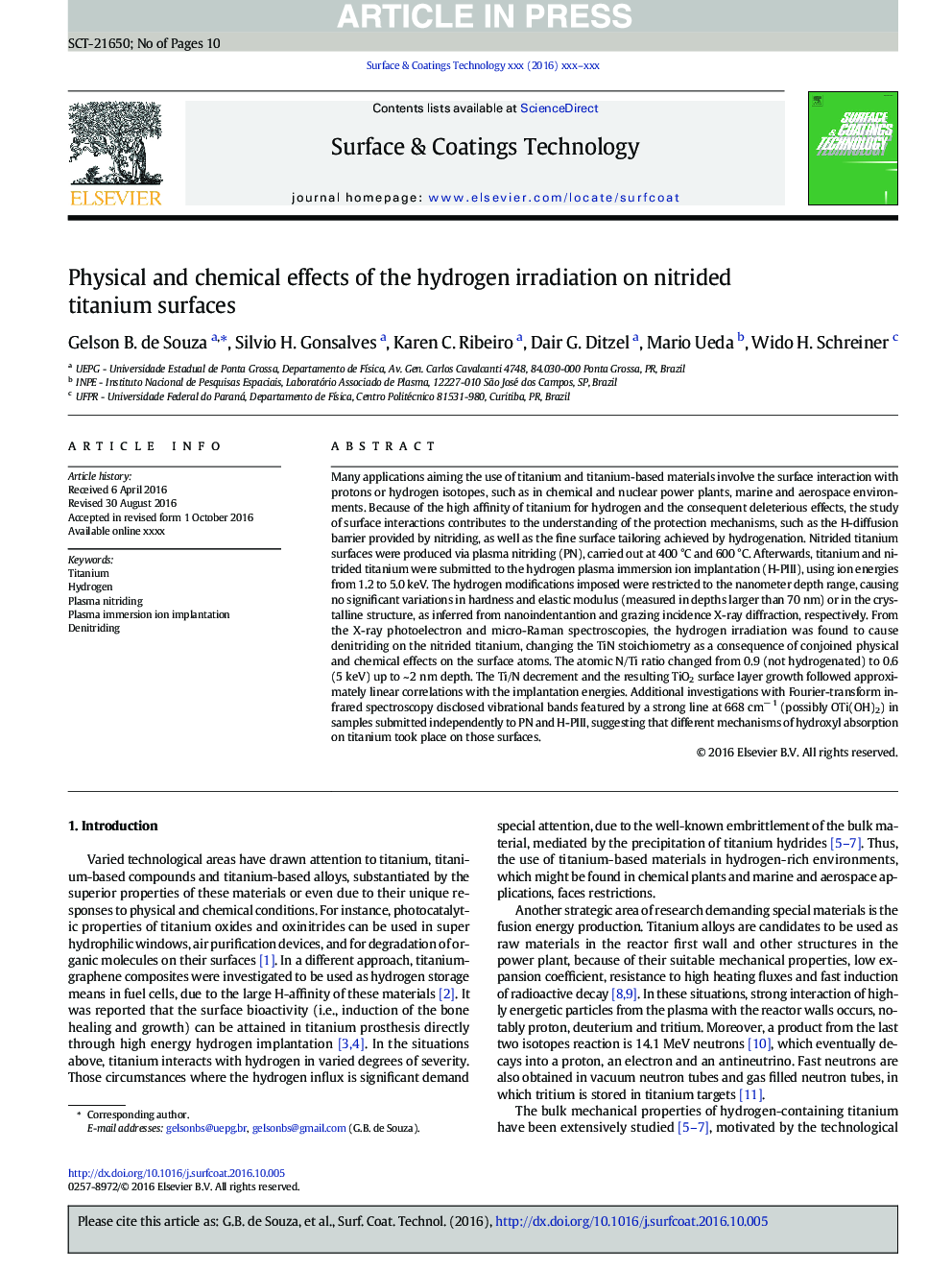| کد مقاله | کد نشریه | سال انتشار | مقاله انگلیسی | نسخه تمام متن |
|---|---|---|---|---|
| 5465582 | 1517570 | 2017 | 10 صفحه PDF | دانلود رایگان |
عنوان انگلیسی مقاله ISI
Physical and chemical effects of the hydrogen irradiation on nitrided titanium surfaces
ترجمه فارسی عنوان
اثرات فیزیکی و شیمیایی پرتو هیدروژن بر سطوح نیتروژن تیتانیوم
دانلود مقاله + سفارش ترجمه
دانلود مقاله ISI انگلیسی
رایگان برای ایرانیان
کلمات کلیدی
موضوعات مرتبط
مهندسی و علوم پایه
مهندسی مواد
فناوری نانو (نانو تکنولوژی)
چکیده انگلیسی
Many applications aiming the use of titanium and titanium-based materials involve the surface interaction with protons or hydrogen isotopes, such as in chemical and nuclear power plants, marine and aerospace environments. Because of the high affinity of titanium for hydrogen and the consequent deleterious effects, the study of surface interactions contributes to the understanding of the protection mechanisms, such as the H-diffusion barrier provided by nitriding, as well as the fine surface tailoring achieved by hydrogenation. Nitrided titanium surfaces were produced via plasma nitriding (PN), carried out at 400 °C and 600 °C. Afterwards, titanium and nitrided titanium were submitted to the hydrogen plasma immersion ion implantation (H-PIII), using ion energies from 1.2 to 5.0 keV. The hydrogen modifications imposed were restricted to the nanometer depth range, causing no significant variations in hardness and elastic modulus (measured in depths larger than 70 nm) or in the crystalline structure, as inferred from nanoindentantion and grazing incidence X-ray diffraction, respectively. From the X-ray photoelectron and micro-Raman spectroscopies, the hydrogen irradiation was found to cause denitriding on the nitrided titanium, changing the TiN stoichiometry as a consequence of conjoined physical and chemical effects on the surface atoms. The atomic N/Ti ratio changed from 0.9 (not hydrogenated) to 0.6 (5 keV) up to ~ 2 nm depth. The Ti/N decrement and the resulting TiO2 surface layer growth followed approximately linear correlations with the implantation energies. Additional investigations with Fourier-transform infrared spectroscopy disclosed vibrational bands featured by a strong line at 668 cmâ 1 (possibly OTi(OH)2) in samples submitted independently to PN and H-PIII, suggesting that different mechanisms of hydroxyl absorption on titanium took place on those surfaces.
ناشر
Database: Elsevier - ScienceDirect (ساینس دایرکت)
Journal: Surface and Coatings Technology - Volume 312, 25 February 2017, Pages 91-100
Journal: Surface and Coatings Technology - Volume 312, 25 February 2017, Pages 91-100
نویسندگان
Gelson B. de Souza, Silvio H. Gonsalves, Karen C. Ribeiro, Dair G. Ditzel, Mario Ueda, Wido H. Schreiner,
